|

HOME |
ABOUT | INDEX |
NEWS |
FACEBOOK |
CONTACT
NON-BINARY
Gender Queer | Gender Neutral | Gender Non-Conforming
Gender Fluidity
"The big
problem for non-binary people like me isn’t just being
seen. It’s being seen as human."
-Radam
Ridwan
"I'm not
gender non-conforming. I'm gender non-compliant."
-Social
Media Comment
"I
am not a woman. I am not a man."
-Prince
(1984)
Genderqueer is identity, behavior, or expression by an individual that does not match the
gender norms of the gender they are perceived to be by
society. Other terms used to describe genderqueer are
non-binary, gender neutral, gender nonconforming, gender variant, gender expansive, gender creative,
gender critical, gender fluid, genderflux, gender diverse, gender ambiguous, and
gender atypical. A person who exhibits gender variance may be
called a gender bender, a gender blender, a gender outlaw, or a gender
anarchist, and may be
transgender or otherwise non-conforming in their gender
identity. In the case of transgender people, they may be
perceived, or perceive themselves as, gender
nonconforming before transitioning, but might not be
perceived as such after transitioning. Some intersex
people may also exhibit gender variance.




The word
transgender usually has a narrower meaning and somewhat
different connotations, including a non-identification
with the gender assigned at birth. Transgender can be
defined as an umbrella term for people whose gender
identity or gender expression differs from the sex they
were assigned at birth. But, not all gender
variant people identify as transgender, and not all
transgender people identify as gender variant. Many
identify simply as men or women. Gender identity is
one's internal sense of one's own gender. While most
people have a gender identity of a boy or a man, or a
girl or a woman, gender identity for other people is
more complex than two choices. Furthermore, gender
expression is the external manifestation of one's gender
identity, usually through "masculine," "feminine," or
gender variant presentation or behavior.
Everything You Need to Know About the Non-Binary
Spectrum
Trevor Project/Daniel Radcliffe: Discussion with Trans
and Nonbinary Youth
Ezra Miller: Sexy, Queer Playboy Photo
Shoot
What Does Enby Mean?
Jamie's Truth is Gender Fluid and
Non-Binary
Demi Lovato, Elliot Page, Sam Smith
Identify as Non-Binary
It Feels Very Positive:
Eddie Izzard Now Using She/Her Pronouns
TED Talk: Parenting a Gender Non-Conforming Child
Congresswoman Talks About Her Gender Non-Conforming
Child
Wikipedia: Gender Variance
Things You Should Know About What It Means To Be
Nonbinary
Advocate: Half of Gen Z Believes Gender
Binary is Outdated
Celebrities Who Identify as Gender Fluid




Fluidity: Short Film
TED Talk: Is Gender Fluid?
How to Affirm Your Gender: Non-Binary People Share Their
Experience
Non-Binary: Struggle for
Respect
Straight Happily Married Father Wears
Skirt and High Heels in Public
TV Report: Gender Fluid Generation
Raising My Rainbow: Gender Nonconforming Kids
Young Boy's Dream of Being a Princess
Info: Transgender
Trans and Nonbinary People on Bodies,
Desirability, and Revolutionizing Beauty
Ash Hardell Video Talk: Spectrums 1
Video Talk: What is My Gender?
GLAAD: Young People Explain What Non-Binary Means to
Them
Famous People Who Have Come Out as Nonbinary
Lorde and
Chappell Roan Talk About Gender
"I’m a
woman except for the days when I’m a man."
-Lorde
Iconic
singer Lorde recounted a conversation she had with
Chappell Roan about gender identity. In a recent
interview with Rolling Stone, New Zealand
singer-songwriter opened up about her gender identity.
She recalled a conversation with fellow musician and
friend Chappell Roan, who asked Lorde if she was
non-binary.
Widely recognized as a queer icon, Roan is known for her
outspoken advocacy for LGBTQ rights. From using her
social media platforms to raise awareness, to dedicating
her 2025 Brit Award for international artist of the year
to trans artists, the Pink Pony Club singer continues to
champion queer representation within the music industry.
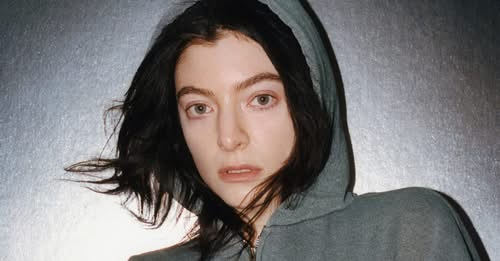
In the interview, Lorde recounted her response to Roan’s
question, stating: “I’m a woman except for the days when
I’m a man." Lorde said. “I know that’s not a very
satisfying answer, but there’s a part of me that is
really resistant to boxing it up.”
Lorde elaborated on how her understanding of her gender
expression has “broadened” since a pivotal moment in
2023, when she tried on a pair of men’s jeans. This
sparked a deeper connection to her authentic self, one
that she had not previously explored in her music. While
writing her new song, Man Of The Year, which will appear
on her upcoming album Virgin, Lorde drew on that
instance – wearing men’s jeans and duct tape across her
chest – to express how her gender felt in that moment.
Virgin, her fourth studio album, is scheduled for
release in June 2025, and is influenced by her growing
sense of comfort and clarity around her gender
expression.
This was not the first time Lorde had addressed gender
identity. In 2022, the Royals singer shared a letter
with fans, expressing a desire to explore the
conventions of gender, beauty, and form and how those
could be reflected in her artistry.
In the Rolling Stones interview, Lorde reaffirmed that
she still identifies as a cis woman and uses the same
pronouns but described herself as feeling “in the middle
gender-wise.”
[Source: Violet Newton-Wild, Diva Magazine, May 2025]
Survey: 5 Percent of Young Adults Identify as Trans or
Nonbinary
This Is What Nonbinary People Look Like
Barbie is Releasing an Androgynous David
Bowie-Inspired Doll
Demi Lovato Comes Out as
Non-Binary
How to Affirm Your Gender: Non-Binary People Share Their
Experience
Famous People Who Have Come Out as Nonbinary
Brit Awards to Eliminate Gendered Categories for 2022
Gender Identity Talk via Sex and the City
Advocate: US State Dept
Introduces Gender Neutral Passports
New Survey: 25% of LGBTQ
Youth Use Non-Binary Pronouns
Jamie's Truth is Gender Fluid and
Non-Binary
Not a Boy, Not a
Girl: Mae Martin Helped Me Realize That’s Okay
"I'm not a
boy. I’m not even a girl. I’m like a failed version of
both.”
-Mae
Martin (Feel Good, 2020)
Mara Harris reflects on how Mae Martin helped them come
to terms with their gender identity...
At around
the age of 14, I started getting into comedy. I was
watching shows like Live at the Apollo, and Mock the
Week, scouring every bit of BBC iPlayer for a bit of
stand up. Eventually I came across Live from the BBC, a
show which had different comedians come in for each
episode. One of those comedians was Mae Martin.
I cannot tell you how many times I have watched that set
since the first time I saw it, seeing someone be open
with their sexuality, and joking about it in ways that
did not diminish it at all. Mae Martin just resonated
with me in a way the comedians I had watched before had
not. I was closeted, and still trying to figure things
out, but seeing that set just helped me feel more at
home in myself and with the world.
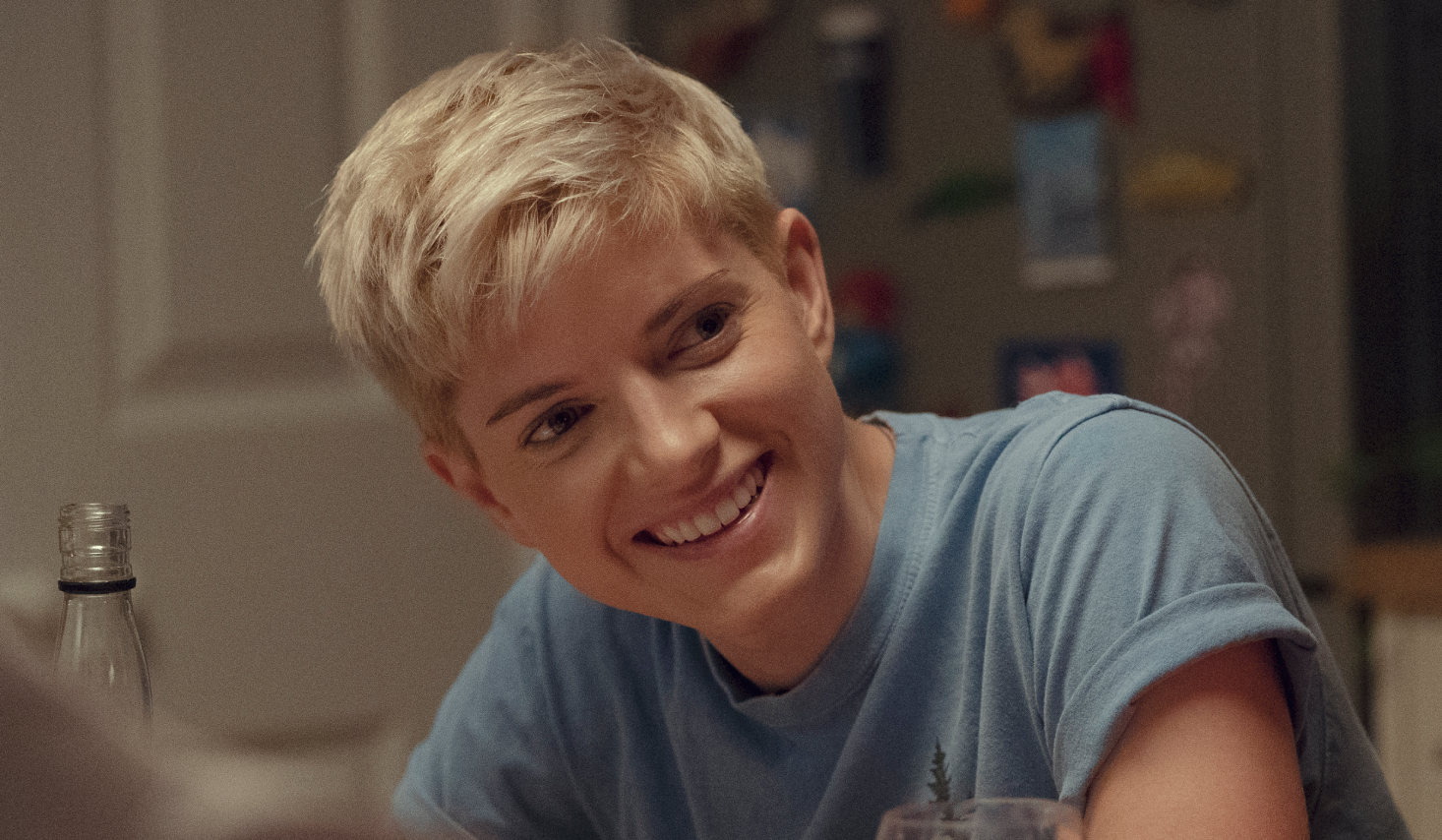
Famous People Who Have Come Out as Nonbinary
Gender Animatic
This Is What Nonbinary People Look Like
Kids Meet a Gender Non-Conforming Person
Documentary: The Gender Spectrum
Nongirly: Gutsy, Goofy, Geeky, Gloriou
Gender Terminology
When I was 18, Mae announced Feel Good, their
semi-autobiographical, rom-com TV show. I was so
excited, I watched all of the trailers, and waited in
anticipation of the release. I’m pretty sure I watched
it all in one day, and I loved every minute of it. It
had such an honest portrayal of a lesbian relationship,
of realizing your sexuality, and of addiction. Its
characters were amazing, and utterly complex, having you
laugh with them, and in support of them in one minute,
but having you question and dislike their actions the
next.
This first season of the show is where the quote that
begins this piece is from. I remember hearing Mae say
those words and thinking, ‘oh wow’. Mae managed to
perfectly sum up a weird feeling I’d had my whole life,
that I didn’t quite realize I had until that moment. It
made me first aware of how I felt about my gender, and
myself.
Mae formally came out as non-binary on Instagram in
2021. She posted some pictures in a binder, explaining
about why and when they tend to wear binders, and
stating that her pronouns are she/they. By then I had
come out to my friends as non-binary, and changed my
pronouns to they/them, so seeing the person that first
got me thinking about their gender come out too was so
heart-warming. Seeing that positive representation from
someone I had been watching for years not only helped me
realize who I was, but also inspired me to be more open
and positive.

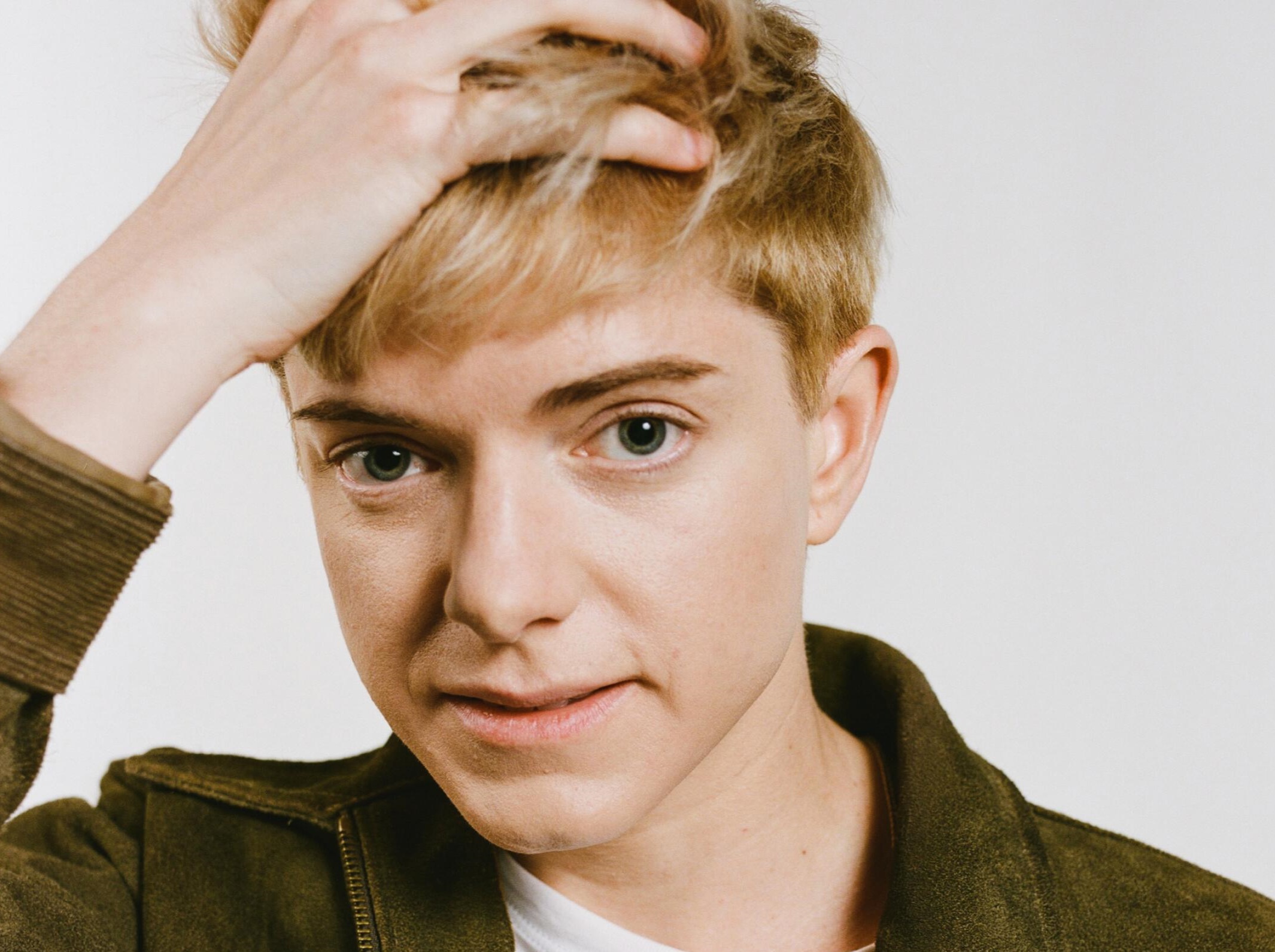

Everything You Need to Know About the Non-Binary
Spectrum
Non-Binary Child and Their
Family Explore Identity
TED Talk: Gender is Not a Straight Line
Respectful and Supportive:
Understanding Non-Binary People
Info: Gender Identity
Girl in the Kinks Shirt by Matt Nathanson
Maggie Szabo: Don't Give Up
Forum: Can You Define Your
Gender Identity?
Bretman Rock:
Unapologetically Queer
Advice From Gender Therapist: Am I Really Genderqueer or
Something Else?
TED Talk: Parenting a Gender Non-Conforming Child
What Does Enby Mean?
The second season of Feel Good came out in June 2021,
and I watched it all in one day too. Mae makes jokes in
that season about the various types of people and/or
things they felt like, rather than feeling like a woman.
It was such a fun and original way of encapsulating the
non-binary experience.
There’s a simple, but important, moment in the last
episode in which George suggests to Mae that she should
Google about being non-binary, and says: ‘You tell me
the right words and I’ll use them.’ Considering stories
about trans people are usually filled with pain,
especially concerning their relationships, this was a
very refreshing moment to watch.
Seeing someone accept their partner so simply for who
they are helps show audiences that trans people can have
wonderful and honest love, that trans people can grow in
their relationships, and they will remain loved. All of
that is so important.
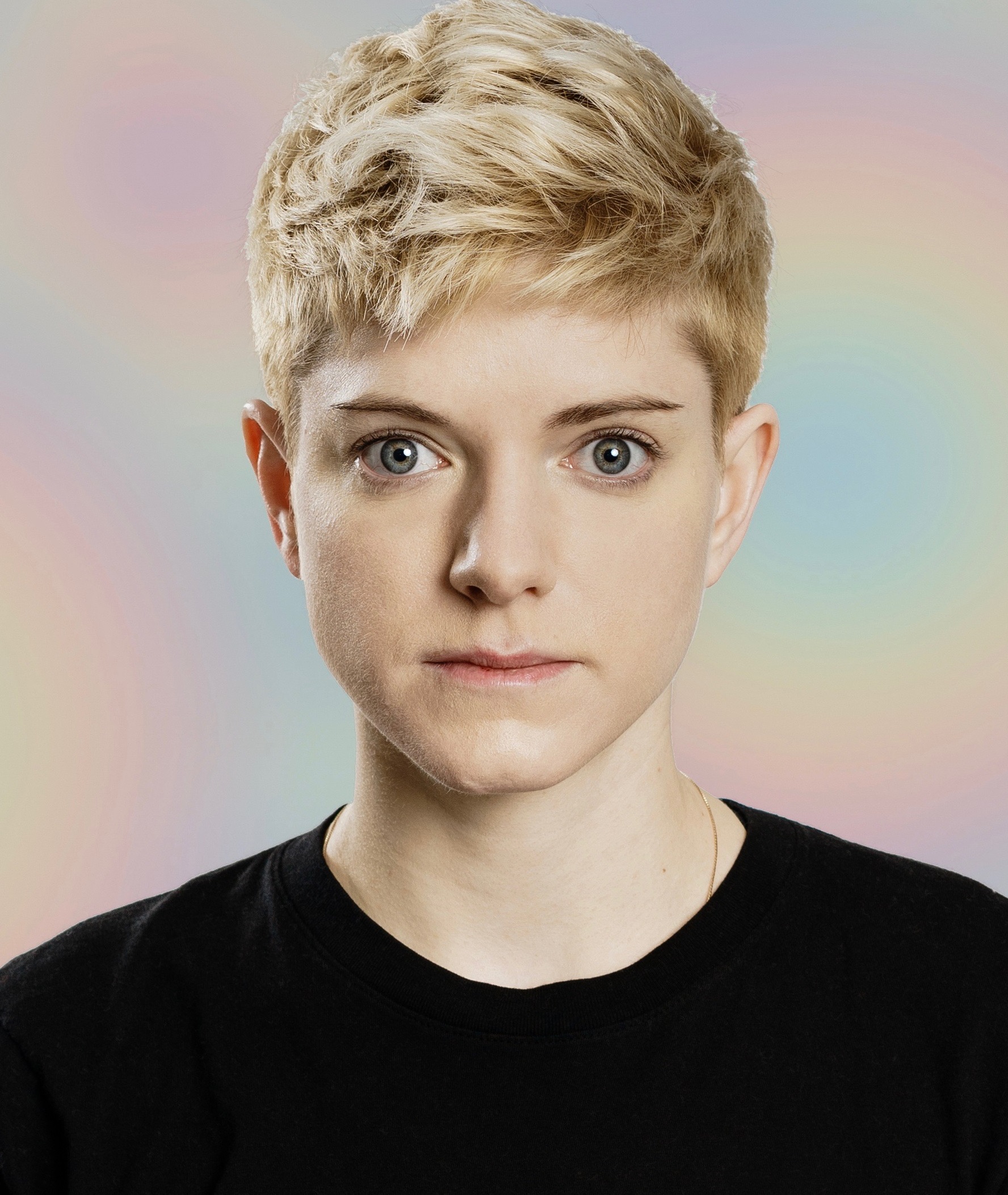


I finally saw Mae perform for the first time later that
year, on their tour for Sap, and it was everything I
could have hoped for. I could not even tell you the
excitement I felt when I spotted them from across the
venue watching Jack Barry doing his opening act. The
show was funny, honest, and relatable. It made both
19-year-old me, and 14-year-old me, so happy.
Now, I’ve started volunteering with Just Like Us, the
LGBTQ young people’s charity, because I want to help
other young people get to see the representation they
need too. One of the first things I had to do as a
volunteer was put together my story of growing up
LGBTQ+, preparing to speak in schools and talk about the
need for allyship.
I immediately knew which moments to include in my story,
which included the times I had watched Mae growing up
and the impact that having LGBTQ+ representation had on
me, helping me to realize who I am. Being able to
inspire other people with the things that inspired me is
so rewarding, and something I am so lucky to do.
In short, thank you Mae Martin, for helping me realize
that I’m not a boy. I’m not a girl. I am, in fact, a
successful version of both.
[Source: Mara Harris, Ambassador, Just Like Us, January
2022]
Gender Fluid Celebrities
Things You Should Know About What It Means To Be
Nonbinary
Non-Binary: Beyond He or She
How to Affirm Your Gender: Non-Binary People Share Their
Experience
Documentary: The Gender Spectrum
Vihart: On Gender
Trevor Project/Daniel Radcliffe: Discussion with Trans
and Nonbinary Youth
Video Report: Back to School for Non-Binary Youth
Jamie's Truth is Gender Fluid and
Non-Binary
American
Passports Will Now Have Third Gender Option
Nonbinary, intersex and gender-nonconforming Americans
will be able to choose a gender option other than “male”
or “female” when applying for a US passport, the State
Department announced in June 2021.
Passport applicants will be able to self-select their
gender without providing supporting medical
documentation.
The policy change is part of the department’s effort to
take “further steps toward ensuring the fair treatment
of LGBTQ US citizens, regardless of their gender or
sex,” Secretary of State Antony Blinken said.

Lambda Legal: State Department Allows X Gender
Markers on US Passports
NBC News: US Adds Third Gender Option to American Passports
Advocate: US State Dept
Introduces Gender Neutral Passports
Them: US State Dept Allows
X Gender Markers on Passports
NPR: US Adds Third Gender
Option On Passports
It is not yet known when the third gender marker,
reportedly to be an “X,” will be available. Blinken said
the department is currently “evaluating the best
approach to achieve this goal” and noted that adding a
gender option “is technologically complex and will take
time.”
Once the US has a third gender option in place, it will
join a growing number of countries with such a passport
option, including Australia, Canada, Germany, India,
Nepal and New Zealand.
In the more immediate term, US passport applicants will
be able to self-select their gender and will no longer
be required to provide medical documentation if their
gender identity does not match the gender marker on
their other identity documents.
The Human Rights Campaign, the country’s largest LGBTQ
advocacy group, applauded the upcoming policy changes,
saying they will “decrease the risk of discrimination,
harassment, and violence for an already vulnerable
group.”
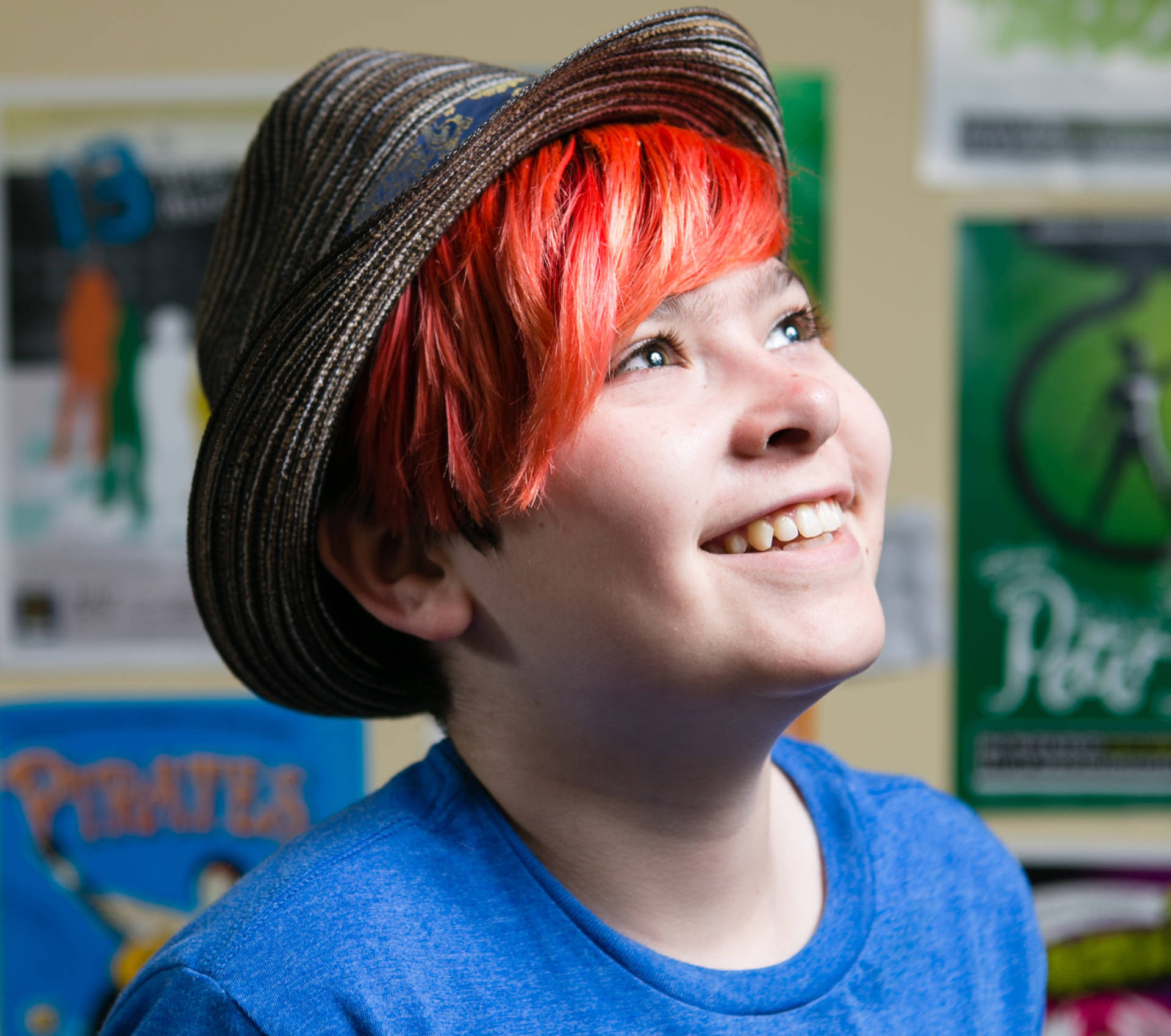

“This is
an important step towards achieving meaningful progress
for LGBTQ equality in America, and will empower and
enable millions of citizens to travel domestically and
internationally with greater confidence that the United
States recognizes their gender identity,” HRC President
Alphonso David said in a statement. He also called for
the US to “encourage other nations to adopt inclusive
policies that support non-binary and transgender
people.”
[Source: Brooke Sopelsa, NBC News, June 2021]
Advocate: Lessons for Parents for Gender Nonconforming
Kids
Info: Gender Identity
Androgynous: Joan Jett, Miley Cyrus, Laura Jane Grace
Ally Guide for Trans and
Non-Binary Youth
Pink Accepts MTV Vanguard
Award 2017
Vihart: On Gender
Non-Binary: Beyond He or She
Different: Joan Jett and Miley Cyrus
Beyond the Binary
Respectful and Supportive:
Understanding Non-Binary People
Gender Spectrum: Is Gender Binary?
Freedom to Be Yourself
PBS Video: Breaking the Binary
Ashley Wilde: What
Does Non-Binary Mean?
Gender
Non-Conformity
"I'm
not a woman. I'm not a man."
-Prince
(1984)
Gender conformity can be
defined most simply as behavior and appearance that
conforms to the social expectations for one’s gender.
So, gender conforming women behave and appear in ways
that are considered feminine. Gender conforming men
behave and appear in ways that are considered masculine.
Gender non-conformity, then, is behaving and appearing
in ways that are considered atypical for one’s gender.
Sometimes "GNC" is used as a shorthand. "Gender nonconforming" was among the 56 genders made
available on Facebook in 2014.

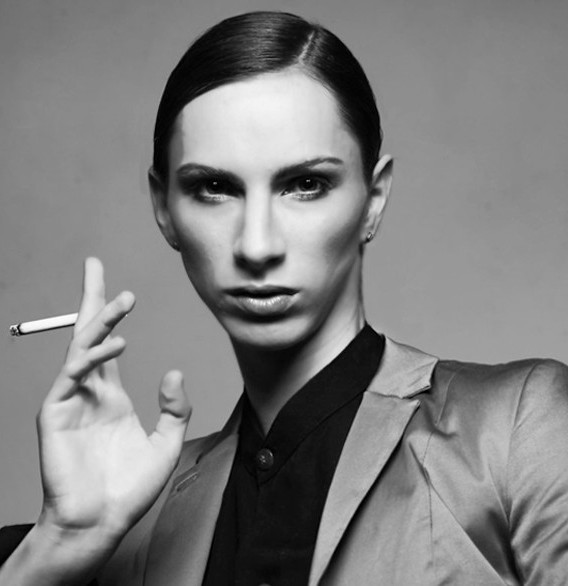


Everything You Need to Know About the Non-Binary
Spectrum
Mexico Issues its First Non-Binary Passport
Things You Should Know About What It Means To Be
Nonbinary
Shea Couleé Opens Up About Embracing
Their Non-Binary Identity
Trans and Nonbinary People: Bodies,
Desirability, Revolutionizing Beauty
Celebrity Spotlight: Genderqueer, Non-Binary, Transgender
Disneyland and Disney
World Begin Using Gender Neutral Language
Bretman Rock:
Unapologetically Queer
One in Ten Teens Identify
as Gender Diverse
Comic Eddie Izzard Now
Uses She/Her Pronouns
Jesse James Keitel:
Non-Binary Actor Makes TV History
Trevor Project Study Finds One in Four Queer Youths ID
as Nonbinary
What does it mean to be gender non-conforming? Childhood
gender nonconformity (CGN) is a phenomenon in which
prepubescent children do not conform to expected
gender-related sociological or psychological patterns,
or identify with the opposite sex/gender.
What does it mean to be gender fluid? Gender fluid is a
gender identity which refers to a gender which varies
over time. A gender fluid person may at any time
identify as male, female, neutrois, or any other
non-binary identity, or some combination of identities.
Their gender can also vary at random or vary in response
to different circumstances.
What is gender questioning? The questioning of one's
gender, sexual identity, sexual orientation, or all
three is a process of exploration by people who may be
unsure, still exploring, and concerned about applying a
social label to themselves for various reasons.




Trans and Gender Queer Over 50
What is Female Masculinity?
How to Affirm Your Gender: Non-Binary People Share Their
Experience
Famous People Who Have Come Out as Nonbinary
Cory Booker's Non-Binary "Niephew"
Ash Hardell Video Talk: Spectrums 1
Video: Types of Genders
Non-Binary: A Gender Fluid Generation Speaks Out
Info: Transgender
CBS News: Gender/The Space Between
Non-Binary Documentary: They/Them
Whittington Family: Ryland's Story
Trans and Nonbinary People: Bodies,
Desirability, Revolutionizing Beauty
TED Talk: Gender is Not a Straight Line
Wikipedia: Genderqueer
Ash and Ari: Non-Binary vs
Androgyny
Nongirly: Gutsy, Goofy, Geeky, Glorious
Gender Animatic



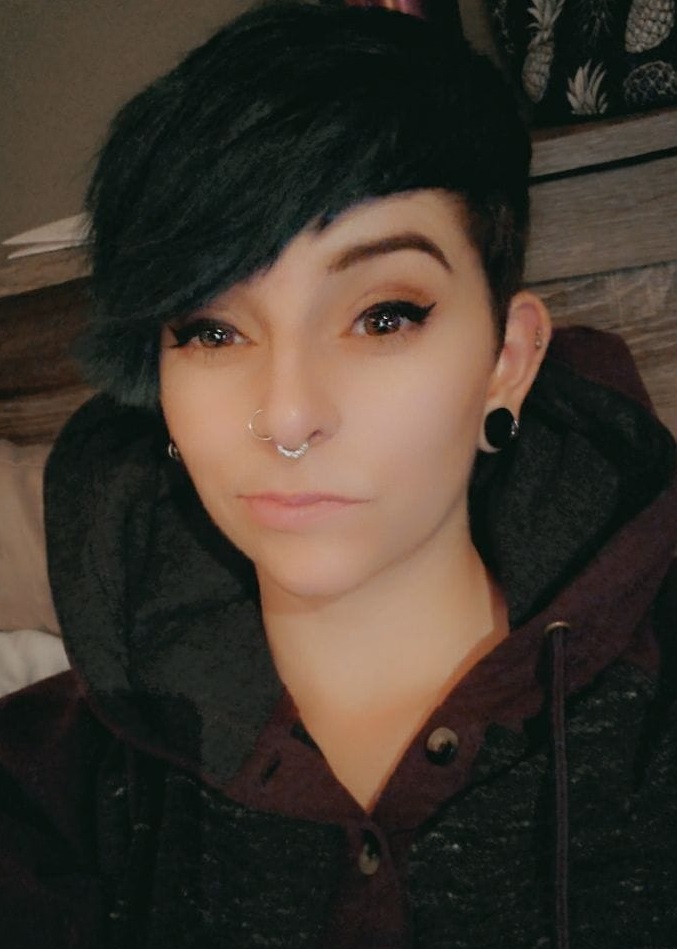
Understanding
Non-Binary and Gender-Fluid Identities
In recent years, discussions around gender have expanded
beyond traditional binary notions, leading to increased
awareness and acceptance of non-binary and gender-fluid
identities. Being non-binary or gender-fluid means
rejecting the idea that gender is strictly limited to
being either male or female, instead embracing a
spectrum of identities that transcend conventional
categorizations.
Non-binary individuals do not exclusively identify as
either male or female. They may experience a sense of
gender that is fluid, neutral, or outside the binary
altogether. Gender fluidity, on the other hand, refers
to a dynamic experience of gender identity, where an
individual's sense of self may fluctuate over time. Both
non-binary and gender-fluid identities challenge the
notion that gender is fixed and immutable.
For many non-binary and gender-fluid people,
self-discovery and self-acceptance are ongoing journeys.
Society's rigid gender norms can often lead to
confusion, isolation, and discrimination. However, as
conversations around gender diversity continue to
evolve, there is growing recognition of the validity and
importance of these identities.



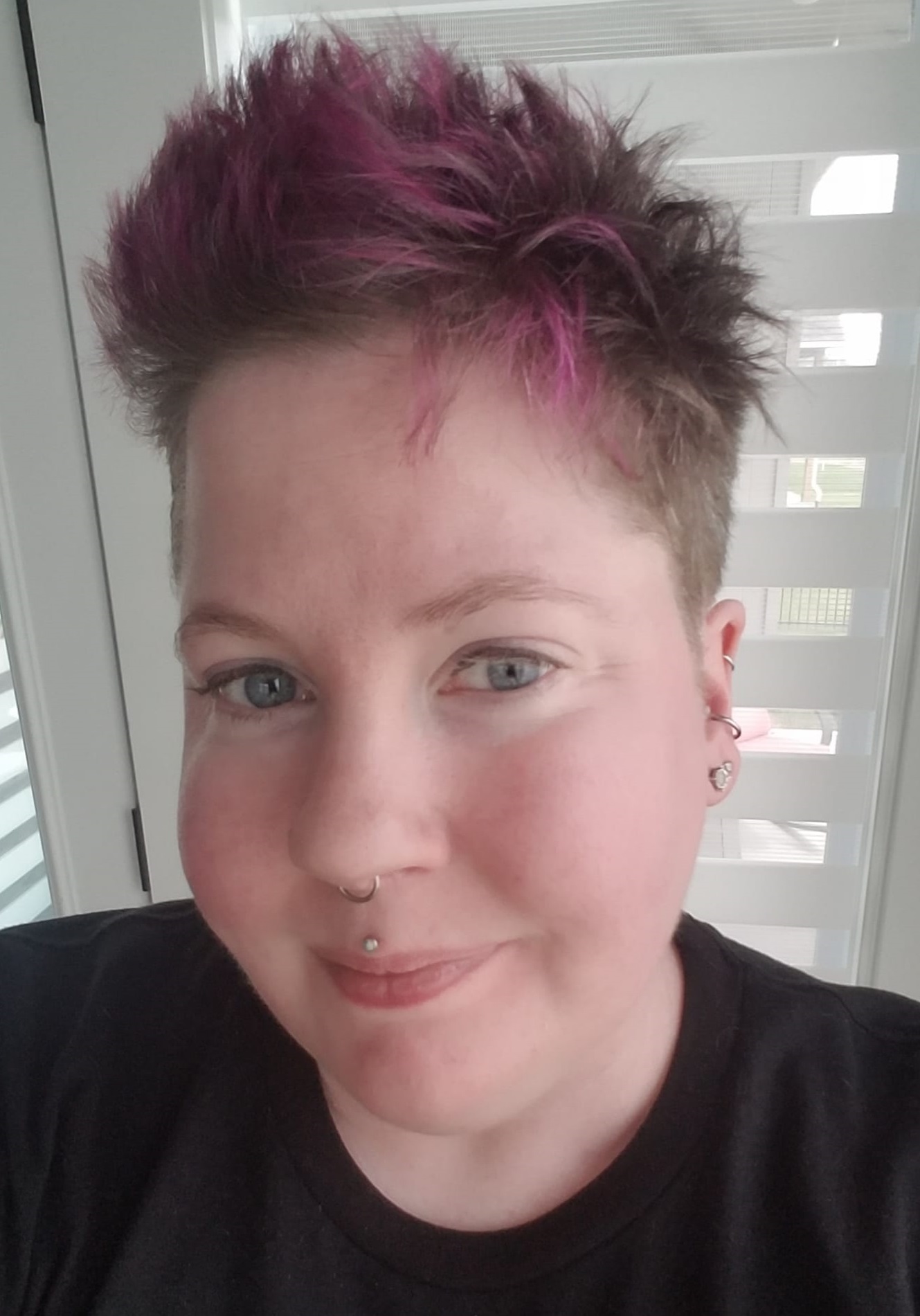
One of the key aspects of being non-binary or
gender-fluid is the freedom to express oneself
authentically. This may involve exploring different
presentations, pronouns, and labels that resonate with
an individual's internal sense of gender. Respect for
chosen names and pronouns is crucial in affirming the
identities of non-binary and gender-fluid individuals,
fostering a more inclusive and supportive environment.
Non-binary and gender-fluid people contribute to the
diversity of human experience, enriching our
understanding of gender and identity. By challenging
societal norms and advocating for greater visibility and
acceptance, they play a vital role in advancing gender
equality and social justice.
It's essential to recognize that everyone's experience
of gender is unique, and there is no one-size-fits-all
definition of what it means to be non-binary or
gender-fluid. Embracing diversity and respecting
individual identities is fundamental to creating a more
inclusive and equitable society for all.
In conclusion, being non-binary or gender-fluid means
embracing a multifaceted understanding of gender that
goes beyond traditional binary frameworks. It's about
affirming the complexity and diversity of human identity
and creating space for everyone to express themselves
authentically. As we continue to challenge outdated
norms and celebrate diversity, we move closer to a world
where all gender identities are recognized, respected,
and celebrated.
Gender Non-Binary and
Concerns About Bullying
Ash Hardell Video Talk: Spectrums 2
Non-Binary: Beyond He or She
Everything You Need to Know About the Non-Binary
Spectrum
Jamie's Truth is Gender Fluid and
Non-Binary
Ashley Wilde: What
Does Non-Binary Mean?
Dear Boys by FELIN
Miley Cyrus: Gender Almost
Irrelevant Part of Relationships
What Does Enby Mean?
TED Talk: Gender Fluid Activist
Beautifully Handsome: Grace Dunham
Things You Should Know About What It Means To Be
Nonbinary
Celebrities Who Identify as Non-Binary
Info: Gender Identity
Forum: Can You Define Your
Gender Identity?
Respectful and Supportive:
Understanding Non-Binary People
Genderqueer.Me
Eddie Izzard:
She/Her Pronouns
"I
am somewhat boyish and somewhat girlish.
I identify with both, but I fancy women.”
-Eddie
Izzard
Genderfluid comedy legend Eddie Izzard announced that
she is now exclusively using she/her pronouns. The
British 58-year-old explained, "it feels great because
people assume that they just know me from before, but
I’m genderfluid. I just want to be based in girl mode
from now on.” Izzard has identified as transgender,
genderfluid, and transvestite since at least 2016, when
she said she is “somewhat boyish and somewhat girlish.
I identify with both, but I fancy women.”


She has also said that she uses the term “transgender”
as an “umbrella term” and has called herself “a lesbian
trapped in a man’s body” several decades before she said
she was genderfluid.
In 2017, she told The Hollywood Reporter, “I am
essentially transgender. I have boy mode and girl mode.
I do feel I have boy genetics and girl genetics.” That
same year, she joked on Twitter that she does not wear
women’s clothes because “they’re my clothes. I bought
them.”
Eddie Izzard in Girl Mode From Now On
Comic Eddie Izzard Now
Uses She/Her Pronouns
Some Backlash Over Eddie Izzard's New Pronouns
Annette Benning on Eddie
Izzard and Elliot Page
Wikipedia: Gender Variance
Celebrities Who Identify as Gender Fluid
What Does Enby Mean?
Advocate: Lessons for Parents for Gender Nonconforming
Kids
Demi Lovato, Elliot Page,
Sam Smith Identify as Non-Binary
Androgynous: Joan Jett, Miley Cyrus, Laura Jane Grace
Straight Happily Married Father Wears
Skirt and High Heels in Public
Vihart: On Gender
Non-Binary: Beyond He or She

 
Gender
Diversity
Dear Boys by FELIN
How to Affirm Your Gender: Non-Binary People Share Their
Experience
This Is What Nonbinary People Look Like
Things You Should Know About What It Means To Be
Nonbinary
Trevor Project/Daniel Radcliffe: Discussion with Trans
and Nonbinary Youth
Demi Lovato, Elliot Page, Sam Smith
Identify as Non-Binary
Ursula K LeGuin: On Being a Man
Non-Binary Child and Their
Family Explore Identity
Forum: Can You Define Your
Gender Identity?
It Feels Very Positive:
Eddie Izzard Now Using She/Her Pronouns
TED Talk: Parenting a Gender Non-Conforming Child
Don't Give Up by Maggie Szabo
Mother's Story: Raising a Gender Nonconforming Child
Info:
Gender
Expression
Respectful and
Supportive
Non-Binary Defined
Most
people (including most transgender people) are either
male or female. But some people don't neatly fit into
the categories of "man" or "woman," or “male” or
“female.” For example, some people have a gender that
blends elements of being a man or a woman, or a gender
that is different than either male or female. Some
people don't identify with any gender. Some people's
gender changes over time.
People whose gender is not male or female use many
different terms to describe themselves, with non-binary
being one of the most common. Other terms include
genderqueer, agender, bigender, and more. None of these
terms mean exactly the same thing – but all speak to an
experience of gender that is not simply male or female.




Ash Hardell Video Talk: Spectrums 2
Info: Gender Identity
Animation Explanation:
Beyond the Binary
Queer People: Don't Give Up
Gender Terminology
Demi Lovato, Elliot Page, Sam Smith
Identify as Non-Binary
Non-Binary: A Gender Fluid Generation Speaks Out
Famous People Who Have Come Out as Nonbinary
Everything You Need to Know About the Non-Binary
Spectrum
TED Talk: Gender Fluid Activist
Gender Animatic
Why Non-Binary?
Some societies (like ours) tend to recognize just two
genders, male and female. The idea that there are only
two genders is sometimes called a “gender binary,”
because binary means “having two parts” (male and
female). Therefore, “non-binary” is one term people use
to describe genders that don’t fall into one of these
two categories, male or female.
Basic Facts about Non-Binary People
Non-binary
people are nothing new. Non-binary people aren’t
confused about their gender identity or following a new
fad – non-binary identities have been recognized for
millennia by cultures and societies around the world.
Some, but not all, non-binary people undergo medical
procedures to make their bodies more congruent with
their gender identity. While not all non-binary people
need medical care to live a fulfilling life, it’s
critical and even life-saving for many.
Most transgender people are not non-binary. While some
transgender people are non-binary, most transgender
people have a gender identity that is either male or
female, and should be treated like any other man or
woman.
Being non-binary is not the same thing as being intersex.
Intersex people have anatomy or genes that don’t fit
typical definitions of male and female. Most intersex
people identify as either men or women. Non-binary
people are usually not intersex: they’re usually born
with bodies that may fit typical definitions of male and
female, but their innate gender identity is something
other than male or female.




Non-Binary: Struggle for
Respect
Documentary: The Gender Spectrum
Trevor Project/Daniel Radcliffe: Discussion with Trans
and Nonbinary Youth
Bretman Rock:
Unapologetically Queer
Celebrities Who Identify as Gender Fluid
Video Talk: Gender Queer Explained
New Survey: 25% of LGBTQ
Youth Use Non-Binary Pronouns
Jesse James Keitel:
Non-Binary Actor Makes TV History
Info: Gender Identity
How
to Be Respectful and Supportive
It isn’t
as hard as you might think to be supportive and
respectful of non-binary people, even if you have just
started to learn about them.
You don’t have to understand what it means for someone
to be non-binary to respect them. Some people haven’t
heard a lot about non-binary genders or have trouble
understanding them, and that’s okay. But identities that
some people don’t understand still deserve respect.
Use the name a person asks you to use. This is one of
the most critical aspects of being respectful of a
non-binary person, as the name you may have been using
may not reflect their gender identity. Don’t ask someone
what their old name was.
Try not to make any assumptions about people’s gender.
You can’t tell if someone is non-binary simply by
looking at them, just like how you can’t tell if someone
is transgender just by how they look.
If you’re not sure what pronouns someone uses, ask.
Different non-binary people may use different pronouns.
Many non-binary people use “they” while others use “he”
or “she,” and still others use other pronouns. Asking
whether someone should be referred to as “he,” “she,”
“they,” or another pronoun may feel awkward at first,
but is one of the simplest and most important ways to
show respect for someone’s identity.
How to Affirm Your Gender: Non-Binary People Share Their
Experience
Congresswoman Talks About Her Gender Non-Conforming
Child
Nongirly: Gutsy, Goofy, Geeky, Glorious
TED Talk: Gender Fluidity
Things You Should Know About What It Means To Be
Nonbinary
Kids Meet a Gender Non-Conforming Person
Rain Dove: Gender Capitalism
I
Am: Gender Identity Music Video
Everything You Need to Know About the Non-Binary
Spectrum




Advocate for non-binary friendly policies. It’s
important for non-binary people to be able to live,
dress and have their gender respected at work, at school
and in public spaces.
Understand that, for many non-binary people, figuring
out which bathroom to use can be challenging. For many
non-binary people, using either the women’s or the men’s
room might feel unsafe, because others may verbally
harass them or even physically attack them. Non-binary
people should be supported by being able to use the
restroom that they believe they will be safest in.
Talk to non-binary people to learn more about who they
are. There’s no one way to be non-binary. The best way
to understand what it’s like to be non-binary is to talk
with non-binary people and listen to their stories.
[Source:
TransEquality, National Center for Transgender Equality,
2018]
Non-Binary: Struggle for
Respect
TV Report: Gender Fluid Generation
Straight Happily Married Father Wears
Skirt and High Heels in Public
Bretman Rock:
Unapologetically Queer
Raising My Rainbow: Gender Nonconforming Kids
Young Boy's Dream of Being a Princess
Beyond the Binary
Trans and Nonbinary People: Bodies,
Desirability, Revolutionizing Beauty
Info: Transgender
Respectful and Supportive:
Understanding Non-Binary People
Gender Spectrum: Is Gender Binary?
Freedom to Be Yourself
PBS Video: Breaking the Binary
Ashley Wilde: What
Does Non-Binary Mean?

 


Gender
Queer
Genderqueer is a term that is
growing in usage, representing a blurring of the lines
surrounding society’s rigid views of both gender
identity and sexual orientation. Genderqueer people
embrace a fluidity of gender expression that is not
limiting. They may not identify as male or female, but
as both, neither, or as a blend. Similarly, genderqueer
is a more inclusive term with respect to sexual
orientation. It does not limit a person to identifying
strictly as heterosexual or homosexual.
Genderqueer as an adjective is a term denoting or
relating to a person who does not subscribe to
conventional gender distinctions but identifies with
neither, both, or a combination of male and female
genders.



Genderqueer as a noun is a person who does not subscribe
to conventional gender distinctions but identifies with
neither, both, or a combination of male and female
genders.
Genderqueer, also known as non-binary, is a catch-all
category for gender identities that are not exclusively
masculine or feminine, identities which are outside the
gender binary and cisnormativity. Genderqueer people may
express a combination of masculinity and femininity, or
neither, in their gender expression.
Genderqueer people may identify as either having an
overlap of, or indefinite lines between, gender
identity;having two or more genders (bigender, trigender,
pangender); having no gender (agender, nongender,
genderless, genderfree, neutrois); moving between
genders or having a fluctuating gender identity (genderfluid,
genderblending);
or being third gender or other-gender, a category which
includes those who do not place a name to their gender.
Gender identity is separate from sexual or romantic
orientation, and genderqueer people have a variety of
sexual orientations, just as transgender and cisgender
people do.
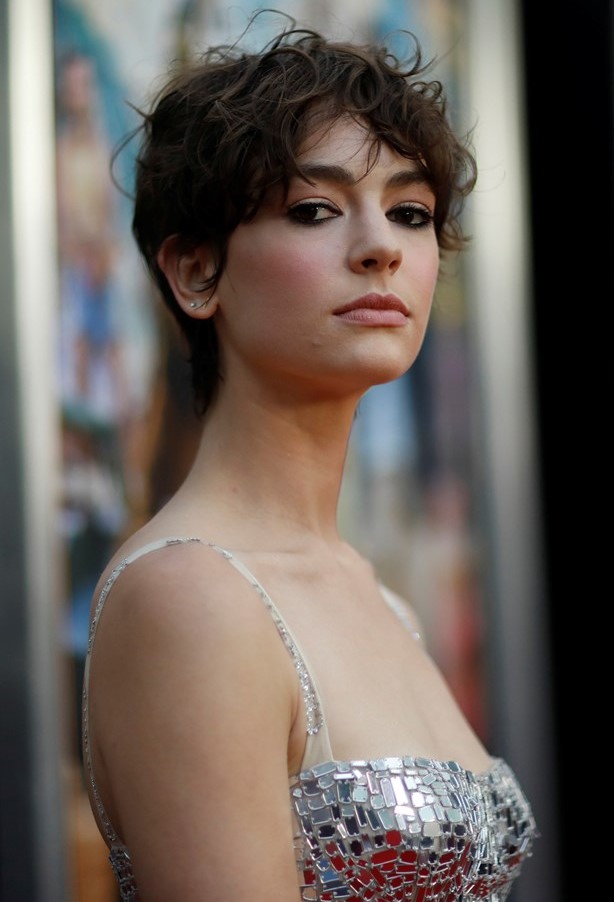



Demi Lovato, Elliot Page, Sam Smith
Identify as Non-Binary
Ash Hardell Video Talk: Spectrums 1
Video Talk: What is My Gender?
GLAAD: Young People Explain What Non-Binary Means to
Them
Different: Joan Jett and Miley Cyrus
PBS Video: Breaking the Binary
Famous People Who Have Come Out as Nonbinary
Things You Should Know About What It Means To Be
Nonbinary
Non-Binary Child and Their
Family Explore Identity
Don't Give Up by Maggie Szabo
Video: Types of Genders
Everything You Need to Know About the Non-Binary
Spectrum
In
addition to being an umbrella term, genderqueer has been
used as an adjective to refer to any people who
transgress distinctions of gender, regardless of their
self-defined gender identity, or who "queer" gender.
Individuals may express gender non-normatively by not
conforming into the binary gender categories of "man"
and "woman". Genderqueer is often used to self-identify
by people who challenge binary social constructions of
gender.
The term has also been applied by those describing what
they see as a gender ambiguity. Androgynous (also
androgyne) is frequently used as a descriptive term for
people in this category. This is because the term
androgyny is closely associated with a blend of socially
defined masculine and feminine traits. However, not all
genderqueer persons identify as androgynous. Some
genderqueer people identify as a masculine woman or a
feminine man or combine genderqueer with another gender
option.
Androgyny is a state in which
gendered behaviors, presentations and roles include
aspects of both masculinity and femininity. People of
any gender identity or sexual orientation can be
androgynous, but it is often favored by non-binary
people as a means to externally express their gender
identity. At way of expressing androgyny can include
dressing in way where one is unable to tell if they are
male or female. People who feel that their gender
identity is androgynous often identify as androgyne.

 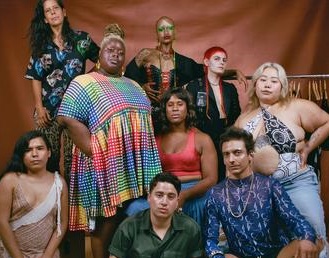

Ashley Wilde: What
Does Non-Binary Mean?
Wikipedia: Gender Variance
Video Talk: What is My Gender?
Respectful and Supportive:
Understanding Non-Binary People
Kids Meet a Gender Non-Conforming Person
Gender
Diversity
Nongirly: Gutsy, Goofy, Geeky, Glorious
How to Affirm Your Gender: Non-Binary People Share Their
Experience
Info:
Gender
Expression
Animation Explanation:
Beyond the Binary
GLAAD: Young People Explain What Non-Binary Means to
Them
Queer People: Don't Give Up
Trans and Nonbinary People: Bodies,
Desirability, Revolutionizing Beauty
Forum: Can You Define Your
Gender Identity?
TED Talk: Gender Fluidity

This Is What Nonbinary People Look Like
Celebrities Who Identify as Non-Binary
Trevor Project/Daniel Radcliffe: Discussion with Trans
and Nonbinary Youth
Androgynous: Joan Jett, Miley Cyrus, Laura Jane Grace
Gender Spectrum: Is Gender Binary?
Fluidity: Short Film
Advice From Gender Therapist: Am I Really Genderqueer or
Something Else?
Non-Binary People Explain What Non-Binary Means to Them
Info: Gender Identity
Ursula K LeGuin: On Being a Man
Gender Terminology
TED Talk: Gender is Not a Straight Line
Wikipedia: Genderqueer
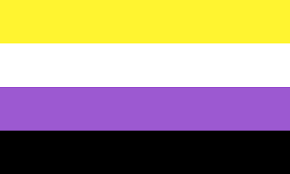

Non-Binary Described
To be a
non-binary person is (essentially) exactly what it
sounds like: To identify yourself, and your gender, as
existing outside of the binary definitions of man or
woman, masculine or feminine. I often hear from the
non-binary people I know that a definitive gender
identity is something that doesn’t make sense to/for
them. Identifying as genderqueer myself, I relate to the
inability force to myself to exist comfortably within
the social rules surrounding gender. That is why the
word non-binary is so beautiful, because many identities
and expressions can exist within its definition.
To be non-binary can be as simple as deciding to live
one’s life as free and true to oneself as possible. But
for each individual, it can mean something much more
personal. For some, it involves changing pronouns,
changing names, changing wardrobes, or, sometimes,
changing nothing at all in order to feel like the truest
version of oneself. Some non-binary people experience
dysphoria and some do not. The non-binary community is
diverse and each experience is different and nuanced.
When asked about my own gender, I often repeat something
I’ve heard said by gender nonconforming and non-binary
people: I am me-gender. I am simply myself, despite any
parts I may have been born with. Who we are is often
affected by how society views us, but how we identify is
entirely about how we view ourselves. To exist outside
strict definitions is powerful and but also vulnerable,
which is why I admire non-binary people who are able to
live their lives honestly. Living openly as non-binary
is a statement made to society that says we can be more
than what we were told to be.
[Source: Kylin Camburn, GLAAD Campus Ambassador, July
2019]
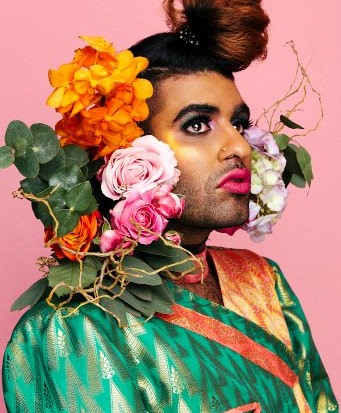

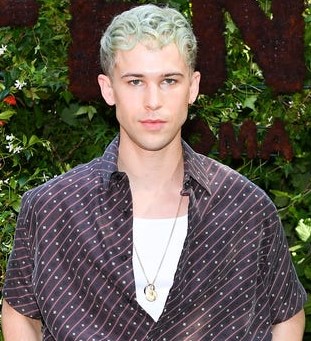

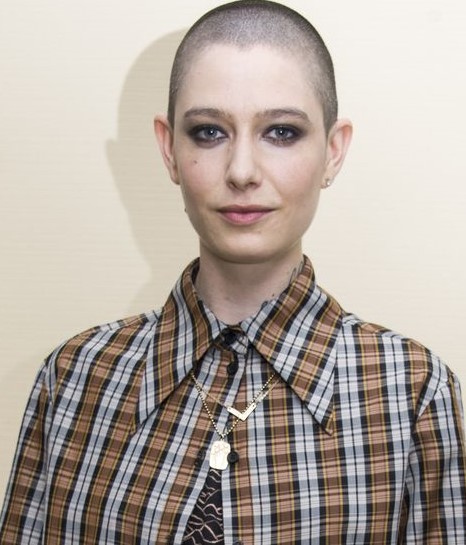
Trans and Nonbinary People on Bodies,
Desirability, and Revolutionizing Beauty
Nongirly: Gutsy, Goofy, Geeky, Glorious
Things You Should Know About What It Means To Be
Nonbinary
TV Report: Gender Fluid Generation
Raising My Rainbow: Gender Nonconforming Kids
GLAAD: Young People Explain What Non-Binary Means to
Them
Bretman Rock:
Unapologetically Queer
Beyond the Binary
Gender Spectrum: Is Gender Binary?
Straight Happily Married Father Wears
Skirt and High Heels in Public

Everything You Need to Know About the Non-Binary
Spectrum
Ash and Ari: Non-Binary vs
Androgyny
What Does Enby Mean?
PBS Video: Breaking the Binary
Advice From Gender Therapist: Am I Really Genderqueer or
Something Else?
TED Talk: Parenting a Gender Non-Conforming Child
Gender Animatic
Non-Binary: Beyond He or She
Info: Transgender
Documentary: The Gender Spectrum
Celebrities Who Identify as Non-Binary
Trevor Project/Daniel Radcliffe: Discussion with Trans
and Nonbinary Youth
Gender Terminology
Non-Binary: A Gender Fluid Generation Speaks Out
TED Talk: Gender Fluid Activist





Identifying as
Non-Binary
Genderqueer
is a term that refers to people who are non-binary. Some
genderqueer people may even prefer to describe
themselves as "non-binary," or "NB", or "enby." These
terms represent a catch-all category for gender identities that are
not exclusively masculine or feminine. Quenderqueer or
non-binary identities
are outside of the gender binary and cisnormativity.
Genderqueer people may identify as one or more of the
following:
--having an overlap of, or indefinite lines between,
gender identity
--having two or more genders (bigender, trigender,
pangender)
--having no gender (agender, nongender,
genderless, genderfree, neutrois)
--moving between genders or having a fluctuating gender
identity (genderfluid, genderblending)
--being third gender or other-gender, a category which
includes those who do not name their gender
Some genderqueer people use that as their only
description of their gender identity, while others also
identify as another gender identity such as androgyne or
bigender. Genderqueer people may also identify as
transgender and/or nonbinary. Some genderqueer people
may wish to transition, either medically or by changing
their name and/or pronouns to suit their preferred
gender expression. Genderqueer people can have any
sexual orientation.
Fluidity: Short Film
List of Non-Binary People
Forum: Can You Define Your
Gender Identity?
Non-Binary: Struggle for
Respect
TED Talk: Is Gender Fluid?
Demi Lovato, Elliot Page, Sam Smith
Identify as Non-Binary
Gender Fluid Celebrities
Freedom to Be Yourself





"Genderqueer", along with being an umbrella term, has
been used as an adjective to refer to any people who
transgress mainstream distinctions of gender, regardless
of their self-defined gender identity. Androgynous is
sometimes also used as a descriptive term for people in
this category, but genderqueer is used to indicate that
gender norms can be transgressed through a combination
of masculinity and femininity, or neither.
On matters of sex and sexuality, there is no avoiding
discussing gender. It is important to start by defining
“gender,” and distinguishing it from “biological sex.”
Too often, biological sex is thought to be synonymous
with the social category of gender. Although they are
consistent for the majority of the population (feminine
women and masculine men), sex and gender are not
consistent for a sizable number of people. And, for some
individuals, the typical categories of sex (female and
male) and gender (feminine and masculine) simply do not
fit.
Gender Fluid Celebrities
Non-Binary/Agender
Wikipedia: Genderqueer
Beautifully Handsome: Grace Dunham
What is Female Masculinity?
Video Talk: What Does Non-Binary Mean?
What is Neutrois?
Forum: Can You Define Your
Gender Identity?
List of Non-Binary People
Ursula K LeGuin: On Being a Man
Famous People Who Have Come Out as Nonbinary
Maggie Szabo: Don't Give Up
 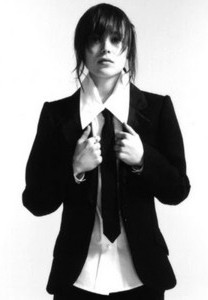

Info: Gender
Expression
TED Talk: Is Gender Fluid?
Ashley Wilde:
What Does Non-Binary Mean?
Myths About Non-Binary People
Respectful and Supportive:
Understanding Non-Binary People
Celebrities Who Identify as Gender Fluid
Dear Boys by FELIN
Video: Types of Genders
Gender: The Space Between
Celebrities Who Identify as Non-Binary
TED Talk: Living Non-Binary in a Binary World
Wikipedia: Gender
Bender
Gender Fluid Celebrities
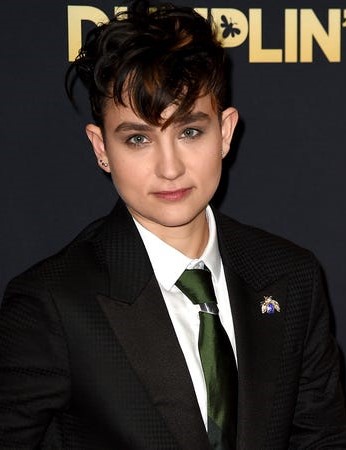




Famous
Non-Binary People
|
Jesse James Keitel - Actor
Courtney Act - Singer
Kate Bornstein - Author
Kehlani - Musician
Asia Kate Dillon - Actor
Miley Cyrus - Musician
Halsey
- Singer
Cara Delevingne - Model
Tommy Dorfman - Actor
Rain Dove - Model
Lachlin Watson - Actor
Angel Haze - Rapper
Bridgette Lundy-Pain - Actor
Eddie Izzard - Comedian
Rose McGowan - Actor
Janelle Monae - Musician
Ellie
Desautels - Actor
Nico
Tortorella - Actor
Misha
Osherovich - Actor
Rebecca Sugar - Screenwriter
Raven
Saunders - Athlete
 |
Demi
Lovato - Musician
Alok
Vaid-Menon - Author
Tom
Phelan - Actor
Jack
Monrow - Journalist
Rhea/River Butcher - Comedian
Ruby Rose - Actor
Sam Smith - Musician
Donia
Kash - Actor
Amanda Stenberg - Actor
Jonathan Van Ness - Hairdresser
Bex Taylor-Klaus - Actor
Harry Styles - Musician
Ser
Anzoategui - Actor
Jacob Tobia - Writer
Liv
Hewson - Actor
Indya Moore - Model
Sarah
Gailey - Writer
Ezra Miller - Actor
Radam
Ridwan - Writer
Sara
Ramirez - Actor
Alex
Sheldon - GLMA's Executive Director

|



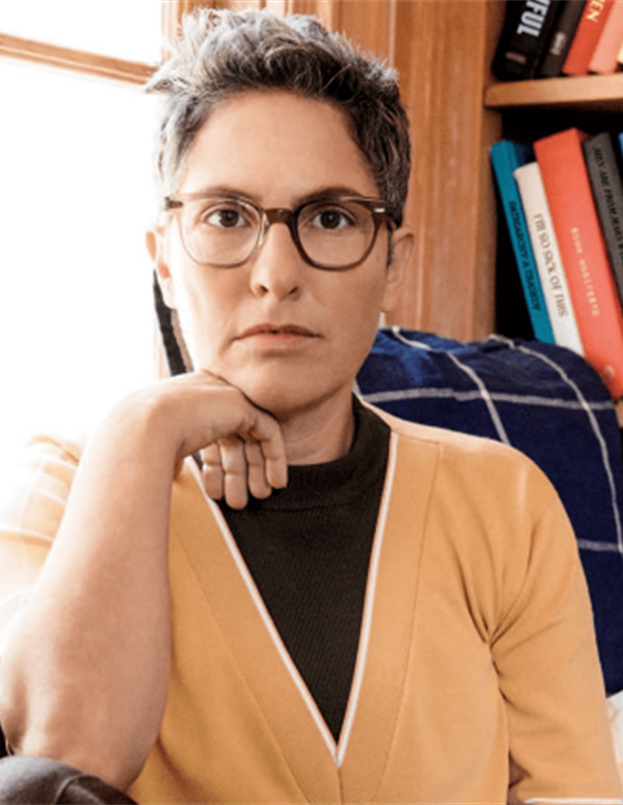

|
Jonathan Van Ness - TV Star
Brigette Lundy-Paine - Actor
Robyn Lambird - Athlete
Quintessa Swindell - Actor
Sara Ramirez - Actor
Olly Alexander - Singer
Nico Tortorella - Actor
Leo Baker - Athlete
Amandla Stenberg - Actor
Kae Tempest - Poet
Theo Germaine - Actor
Hikaru Utada - Musician
Emma D’Arcy - Actor
 |
Lily Gladstone - Actor
Lio Tipton - Model
Sam Smith - Musician
Daisy Eagan - Actor
Nikki Hiltz - Athlete
Mae Martin - Comedian
Asia Kate Dillon - Actor
Joey Soloway - Filmmaker
Emma Corrin - Actor
Dua Saleh - Musician
Ian Alexander - Actor
Liv Hewson - Actor
Raegan Revord - Actor (Young
Sheldon)
 |
Non-Binary: Beyond He or She
Beautifully Handsome: Grace Dunham
How to Affirm Your Gender: Non-Binary People
Share Their Experience
Famous People Who Have Come Out as Nonbinary
GLAAD: Young People Explain What Non-Binary Means to
Them
TED Talk: Gender Fluid Activist
Info: Gender
Expression
Things You Should Know About What It
Means To Be Nonbinary
Ashley
Wilde: What Does Non-Binary Mean?
Everything You Need to Know About the
Non-Binary Spectrum
Things Not to Say to a Non-Binary Person
Non-Binary People are Nothing New: Historical Gender
Diverse Identities

Third Gender
Third
gender or third sex is a non-binary designation in which
individuals are categorized, either by themselves or by
society, as neither man nor woman. It also describes a
social category present in those societies that
recognize three or more genders. The term third is
usually understood to mean "other." Some anthropologists
and sociologists have described not only third genders,
but also fourth and fifth genders.
Apart from biological/anatomical sex, the state of
personally identifying as, or being identified by
society as, a man, a woman, or other, is usually also
defined by the individual's gender identity and gender
role in the particular culture in which they live. Not
all cultures have strictly defined gender roles. In
different cultures, a third or fourth gender may
represent very different things. In Australia, the Yimpininni
community refer to their trans members as Sistergirls
and Brotherboys. To the Indigenous Māhū
of Hawaii, it is an intermediate state between man and
woman, or to be a "person of indeterminate gender". The
traditional Dineh of the Southwestern US acknowledge
four genders: feminine woman, masculine woman, feminine
man, masculine man. The term "third gender" has also
been used to describe hijras of India, Bangladesh and
Pakistan (who have gained legal identity), fa'afafine of
Polynesia, and sworn virgins of the Balkans.
While found in a number of non-Western cultures,
concepts of "third" and "fourth" and
more gender roles
are still somewhat new to mainstream western culture and
conceptual thought. The concept is most likely to be
embraced in the modern LGBTQ or queer subcultures, or in
ethnic minority cultures that exist within larger
Western communities such as the North American
Indigenous cultures that have roles for Two Spirit
people. While mainstream western scholars, notably
anthropologists who have tried to write about Native
American and South Asian "gender variant" people, have
often sought to understand the term "third gender"
solely in the language of the modern LGBTQ community,
other scholars especially Indigenous scholars, stress
that their lack of cultural understanding and context
has led to widespread misrepresentation of third gender
people.
Info: Two Spirit
Wikipedia: Third Gender
USA Today: California Legally Recognizes Third Gender
Daily Wire: California Offers Non-Binary Option
Wikipedia: Gender Variance
Advocate: Lessons for Parents for Gender Nonconforming
Kids
Non-Binary: Beyond He or She
Demi Lovato, Elliot Page, Sam Smith Identify
as Non-Binary
Info: Transgender
Beautifully Handsome: Grace Dunham
Non-Binary People are Nothing New: Historical Gender Diverse
Identities
Non-Binary: Struggle for
Respect
Gender
Diversity
Bretman Rock:
Unapologetically Queer
Info: Gender Identity

Without
Gender
"Agender" is a term which can be literally
translated as "without gender" or "non-gender."
It can be seen either as a non-binary gender
identity or as a statement of not having a
gender identity. People who identify as agender
may describe themselves as one or more of the
following:
--Genderless or lacking gender.
--Gender neutral. This may be meant in the sense
of being neither man or woman yet still having a
gender.
--Neutrois or neutrally gendered.
--Having an unknown or undefinable gender; not
aligning with any gender.
--Having no other words that fit their gender
identity.
--Not knowing or not caring about gender, as an
internal identity and/or as an external label.
--Deciding not to label their gender.
--Identifying more as a person than any gender
at all.
Many agender people also identify as genderqueer,
non-binary and/or transgender. However, some
agender people prefer to avoid these terms,
especially transgender, as they feel this
implies identifying as a gender other than their
assigned gender, while they in fact do not
identify as any gender at all.

Agender people can have any preference for
pronouns, although some prefer to avoid using
gendered language about themselves as much as
possible. They can also present in any way -
masculine, feminine, both or neither. Agender
people can experience dysphoria if they are
unable to express their identity in a way they
are comfortable with.
Agender people who wish to appear gender-neutral
or genderless may have gender nullification
surgery to achieve a body that lacks sex
characteristics. Chromosome therapy is currently
being studied by researchers at UC Berkeley
which attempts to nullify those chromosomes
which stereotypically identify the individual by
a sex.




Kids Meet a Gender Non-Conforming Person
Advice From Gender Therapist: Am I Really Genderqueer or
Something Else?
Genderqueer.Me
Freedom to Be Yourself
TED Talk: Living Non-Binary in a Binary World
Rain Dove: Playing With Gender
BuzzFeed: Stunningly Beautiful
Androgynous Models
Non-Binary People are Nothing New:
Historical Gender Diverse Identities
Wikipedia:
Metrosexual
Celebrities Who Identify as Gender Fluid
Maggie Szabo: Don't Give Up
Rain Dove: Playing With Gender
Video: Types of Genders
Agender people can be of any sexuality and
should not be confused with being asexual.
Agender is also called genderblank, genderfree,
genderless, gendervoid, non-gendered, or null
gender. Agender is an identity under the
nonbinary and transgender umbrella terms.
Agender individuals find that they have no
gender identity, although some define this more
as having a gender identity that is neutral.
Some agender people feel that they have no
gender identity, while others feel that agender
is itself a gender identity. This is similar to
and overlaps with the experience of being gender
neutral or having a neutral gender identity.
As some agender people have no gender identity,
it is important to not talk about nonbinary or
transgender people's experiences only in the
sense of gender identity.




What is Neutrois? Neutrois is a non-binary
gender identity that falls under the genderqueer
or transgender umbrellas. There is no one
definition of Neutrois, since each person that
self-identifies as such experiences their gender
differently. The most common ones are:
Neutral-gender, Null-gender, Neither male nor
female, Genderless, Agender.
It is often said that non-gender or
genderlessness is the experience of having no
gender identity at all, whereas gender neutral
or neutrois is the experience of having a gender
identity, a gender identity which is not male or
female, but neutral. However, these statements
don't match the experiences of everyone who has
taken up these identities as their own. This is
a problem of a difference between word
definitions that are prescriptivist (telling
everyone how they should use a word, and saying
that many people use it wrong) and descriptivist
(describing how people have actually been using
a word, without telling them to change).
Non-Binary/Agender
TED Talk: Is Gender Fluid?
Beyond the Binary
Gender
Animatic
Vihart: On
Gender
What is
Neutrois?
List of Non-Binary People
Genderqueer.Me
Non-Binary: Beyond He or She
Myths About Non-Binary People
Gender: The Space Between
Wikipedia: Gender
Bender
Gender Fluid Celebrities
Non-Binary Documentary: They/Them

Neutrois
Neutrois
is a term used to describe persons with a null or
neutral gender (being neither male nor female), and in
some cases, a person who may also seek to reduce signs
of their physical sex. The exact definition of neutrois
may differ depending on the source. Neutrois is
understood as a non-binary gender that can fall under
the genderqueer and/or transgender umbrellas, though a
neutrois person may identify themselves as agender or
genderless rather than neutrois.
Neutrois
is not androgyne, it’s quite the opposite. Androgyny is
a combination of female and male characteristics, while
neutrois is an elimination of them.
Neutrois are agender or neutral-gender. They usually
experience a sense of gender dysphoria, one that doesn’t
correctly reflect their internal gender.
Neutrois is not genderless. While the prefix a- in
agender may hint at a “lack of,” neutrois is not
necessarily a lack of gender. Just like a neutral color
does not mean colorless, or a neutral opinion does not
mean without opinion, a neutral gender does mean without
gender. Neutrois do have an internal gender, it just
happens to be neither male, nor female. It’s neutral.

Ash and Ari: Non-Binary vs
Androgyny
TED Talk: Parenting a Gender Non-Conforming Child
Don't Give Up by Maggie Szabo
Mother's Story: Raising a Gender Nonconforming Child
Info:
Gender
Expression
Congresswoman Talks About Her Gender Non-Conforming
Child
Androgynous: Joan Jett, Miley Cyrus, Laura Jane Grace
TED Talk: Gender Fluidity
Ashley Wilde: What
Does Non-Binary Mean?
Forum: Can You Define Your
Gender Identity?
What is Female Masculinity?
Gender Fluid Celebrities
GLAAD: Young People Explain What Non-Binary Means to
Them
Kids Meet a Gender Non-Conforming Person
Rain Dove: Gender Capitalism
Everything You Need to Know About the Non-Binary
Spectrum
Gender
Bending
According to Wikipedia, a gender bender is one
who genderfucks or "queers" gender. A gender bender is a person who
disrupts, "bends," "messes with," or "fucks
with" expected gender roles. Gender bending
(and gender blending) is
sometimes a form of social activism undertaken
to destroy rigid gender roles and defy sex-role
stereotypes, notably in cases where the
gender-nonconforming person finds these roles
oppressive. The term "gender critical" has been
used. It can be a reaction to, and protest
of, homophobia, transphobia or misogyny.
Some gender benders identify with the sex
assigned them at birth, but challenge the
societal norms that assign expectations of
particular, gendered behavior to that sex. This
rebellion can involve androgynous dress,
adornment, behavior, and atypical gender roles.
Gender benders may self-identify as trans or
genderqueer. However, many trans people do not
consider themselves "gender benders."



As reported in Daily Gazette (2012), "genderfuck" is a term used to
describe "a person's gender identity or the act
of consciously and conspicuously challenging
traditional ideas of the gender binary through
androgyny, hyperbole, and cross-dressing."
The Urban Dictionary defines "genderfuck" as
deliberately sending mixed messages about one's
sex, usually through one's dress (wearing a skirt
and a beard). It is based upon the belief/idea
that either gender does not exist (but only in
the context of culture) or that there are
multiple genders (beyond male and female),
including but not limited to transgender.
Fluidity: Short Film
Gender Terminology
Trevor Project/Daniel Radcliffe: Discussion with Trans
and Nonbinary Youth
Forum: Can You Define Your
Gender Identity?
TED Talk: Gender is Not a Straight Line
Vihart: On Gender
Video Talk: What is My Gender?
Girl in the Kinks Shirt by Matt Nathanson
Gender Spectrum: Is Gender Binary?
Wikipedia: Gender Variance
Freedom to Be Yourself
Non-Binary: A Gender Fluid Generation Speaks Out

Atypical
Gender Roles
An
atypical gender role is a gender role comprising
gender-typed behaviors not typically associated
with a cultural norm. Gender role stereotypes
are the socially determined model which contains
the cultural beliefs about what the gender roles
should be. It is what a society expects men and
women to think, look like, and behave. Gender
role stereotypes are often based on gender
norms. Examples of some atypical gender roles:
Househusbands - Men who stay at home and take
care of the house and children while their
partner goes to work. According to Sam Roberts
of the New York Times, in 1970 four percent of
American men earned less than their wives.
National Public Radio reported that by 2015 this
had risen to 38%.
Metrosexual - A man of any sexual orientation
who has interest in style and fashion; typically
well dressed and meticulously groomed.
Androgyne - An androgynous person, identifying
as neither male nor female; Or presenting a
gender either mixed or neutral.
Crossdresser - A person who dresses in the
clothing and approximating the appearance of
members of the opposite gender, in public or
solely in private, without proclaiming
themselves to be that gender. Cross dressers may
be cisgender, or they may be trans people who
have not yet transitioned.
Things Not to Say to a Non-Binary Person
Animation Explanation:
Beyond the Binary
Gender
Diversity
TED Talk: Parenting a Gender Non-Conforming Child
Info:
Gender
Expression
Androgynous: Joan Jett, Miley Cyrus, Laura Jane Grace
TED Talk: Gender Fluidity
Gender Fluid Celebrities
CBS News: Gender/The Space Between
Wikipedia: Genderqueer
Non-Binary People are Nothing New: Historical
Gender Diverse Identities
Hijra - In India, a (sometimes neutered) person whose
anatomy is in most cases identified as male
(more rarely female or intersex), but whose
gender identity is neither masculine nor
feminine, whose gender role includes special
clothing that identifies them as a hijra, and
whose gender role includes a special place in
society and special occupations.
Khanith - In Arab countries, the gynecomimetic partner in a
heterogender homosexual relationship, who may
retain his public status as a man, despite his
departure in dress and behavior from a
socio-normal male role. The clothing of these
individuals must be intermediate between that of
a male and a female. His social role includes
the freedom to associate with women in the
entire range of their social interactions,
including singing with them at a wedding.
Muxe - (Pronounced “moo-shay") In Zapotec
communities of southern Mexico, is describes a
person registered as male at birth who
identifies with or presents a feminine gender
expression, typically through behaviors,
occupations, modes of dress that are culturally
associated with femininity.
Bakla - This word is borrowed from Tagalog and
is a sometimes derogatory, potentially offensive
word in Philippine English. It is a person
assigned as male at birth who identifies with
or presents a feminine gender expression,
typically through behaviors, occupations, modes
of dress, that are culturally associated with
femininity. Bakla encompasses a wide range of
gendered characteristics and practices that do
not correspond to heteronormative ideas of
masculinity. It can often, but not always,
denote homosexuality, although the term is
increasingly being used as a synonym for Western
terms relating to sexual orientation, such as
gay and homosexual. They are often considered a
third gender. Many bakla are exclusively
attracted to men and some identify as women. The
polar opposite of the term in Philippine culture
is tomboy (natively the lakin-on or binalaki),
which refers to women with a masculine gender
expression (usually, but not always, lesbian).
The term is commonly incorrectly applied to
trans women.

Gender Terminology
Wikipedia: Androgyny
Gender Spectrum: Is Gender Binary?
Trevor Project/Daniel Radcliffe: Discussion with Trans
and Nonbinary Youth
Wikipedia:
Bakla
TED Talk: Parenting a Gender
Non-Conforming Child
Cory Booker's Non-Binary "Niephew"
Different: Joan Jett and Miley Cyrus
PBS Video: Breaking the Binary
Metrosexual
According to Merriam-Webster, a metrosexual is
usually urban heterosexual male given to
enhancing his personal appearance by fastidious
grooming, beauty treatments, and fashionable
clothes.
The term "metrosexual" is a merging of the words
"metropolitan" and "sexual," coined in 1994
describing a man (especially one living in an
urban, post-industrial, capitalist culture) who
is especially meticulous about his grooming and
appearance, typically spending a significant
amount of time and money on shopping as part of
this. The term is thought to describe
heterosexual men who adopt fashions and
lifestyles stereotypically associated with
homosexual men. While the term suggests that a
metrosexual is heterosexual, it can refer to
anyone with any sexual orientation.



The term "metrosexual" originated in an article
by Mark Simpson published in 1994,
in The Independent. Simpson wrote: "Metrosexual
man, the single young man with a high disposable
income, living or working in the city (because
that's where all the best shops are), is perhaps
the most promising consumer market of the
decade. In the Eighties he was only to be found
inside fashion magazines such as GQ. In the
Nineties, he’s everywhere and he's going
shopping."
However, it was not until the early 2000s when
Simpson returned to the subject that the term
became globally popular. In 2002, Salon.com
published an article by Simpson, which described
David Beckham as "the biggest metrosexual in
Britain" and offered this updated definition:
"The typical metrosexual is a young man with
money to spend, living in or within easy reach
of a metropolis, because that’s where all the
best shops, clubs, gyms and hairdressers are. He
might be officially gay, straight or bisexual,
but this is utterly immaterial because he has
clearly taken himself as his own love object and
pleasure as his sexual preference."
Metrosexuals may be the modern incarnation of
the 19th century "dandy."
In
its soundbite diffusion through the channels of
marketeers and popular media, who eagerly and
constantly reminded their audience that the
metrosexual was straight, the metrosexual has
congealed into something more digestible for
consumers: a heterosexual male who is in touch
with his feminine side. He color-coordinates,
cares deeply about exfoliation, and has perhaps manscaped. Men did not go to shopping malls, so
consumer culture promoted the idea of a
sensitive man who went to malls, bought
magazines and spent freely to improve his
personal appearance.
According to the Urban Dictionary, You might be
"metrosexual" if...
--You just can't walk past a Banana Republic
store without making a purchase.
--You own 20 pairs of shoes, half a dozen pairs
of sunglasses, just as many watches, and carry a man-purse.
--You see a stylist instead of a barber, because
barbers don't do highlights.
--You can make lamb shanks and risotto for
dinner and Eggs Benedict for breakfast... all
from scratch.
--You only wear Calvin Klein boxer-briefs.
--You shave more than just your face. You also
exfoliate and moisturize.
--You would never, ever own a pickup truck.
--You can't imagine a day without hair styling
products.
--You'd rather drink wine than beer... but
you'll find out what estate and vintage first.
--Despite being flattered (even proud) that gay
guys hit on you, you still find the thought of
actually getting intimate with another man truly
repulsive.

Fluidity: Short Film
Ursula K LeGuin: On Being a Man
Beyond the Binary
PBS Video: Breaking the Binary
Maggie Szabo: Don't Give Up
Video Report: Back to School for Non-Binary Youth
I
Am: Gender Identity Music Video
Wikipedia: Gender Variance
Non-Binary People Explain What Non-Binary Means to Them
CBS News: Gender/The Space Between
Ash and Ari: Non-Binary vs
Androgyny
Gender
Diversity
Video Talk: What is My Gender?
TED Talk: Parenting a Gender Non-Conforming Child
Info:
Gender
Expression
Gender Fluid Celebrities
Androgynous: Joan Jett, Miley Cyrus, Laura Jane Grace
TED Talk: Gender Fluidity
What is Female Masculinity?
Things Not to Say to a Non-Binary Person
Queer People: Don't Give Up
Wikipedia: Genderqueer

HOME
QUEER CAFE
│ LGBTQ Information Network │ Established 2017 |